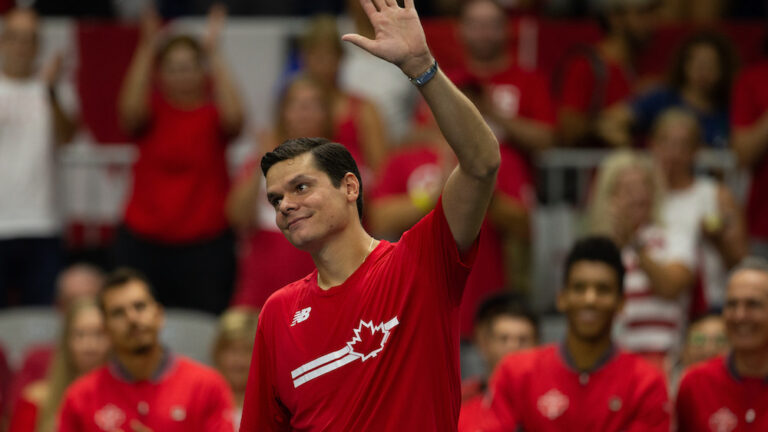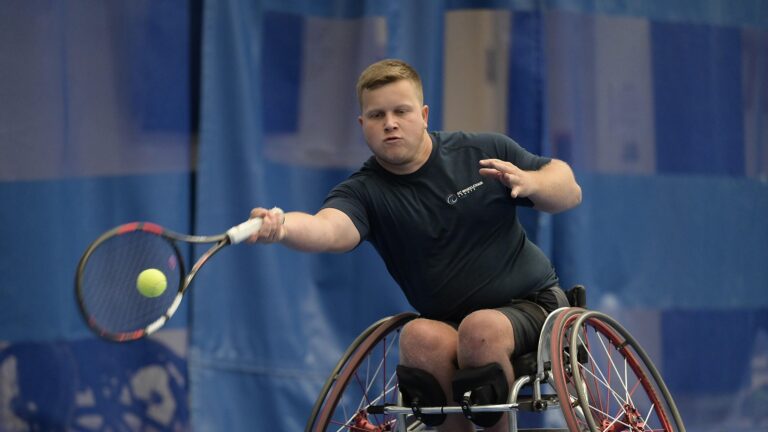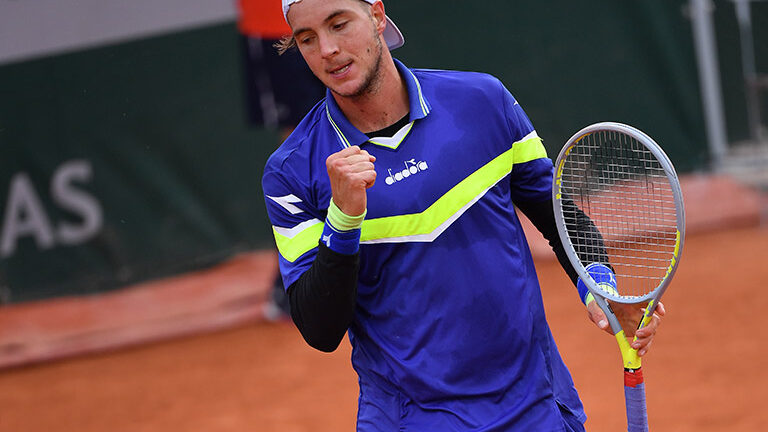
Photo : TennisTV
On February 20, Félix Auger-Aliassime’s winning streak came to an end in Marseille, France, when he was toppled by World No.7 Andrey Rublev of Russia (7-5, 7-6 (4)).
You can read all about the indoor match right here.
Rublev capitalized on his chance to exact revenge on the Quebecer, who defeated him in the semis in Rotterdam the week prior.
If you add up all his singles matches since the start of the season, including the ones he played at the ATP Cup, Félix departed from the south of France with a15–4 record en route to a quick break (he withdrew from Dubai) ahead of the Sunshine Double: two 10-day events in Indian Wells and Miami.
Not only is he off to a great start in 2022, Félix has also added a major weapon to his arsenal by becoming one of the most accurate servers on the Tour. Hitting 9.5 aces per match in 2021, he’s bumped his average up to 12 since January. Including the 5 ATP Cup matches and 14 regular ones, he’s collected 222 aces in 19 bouts (average of 11.7). After the weekend, he ranked second on the list of ATP ace leaders, behind Reilly Opelka with 315 and ahead of Maxime Cressy (219) and John Isner (192). Not too shabby!
As for Rublev, he’s also having a great year thus far (9–2). On Sunday, after winning the singles tournament, he went back out to claim the doubles title with Denys Molchanov of Ukraine over Raven Klaasen of South Africa and Ben McLachlan of Japan (4-6, 7-5, 10-7).
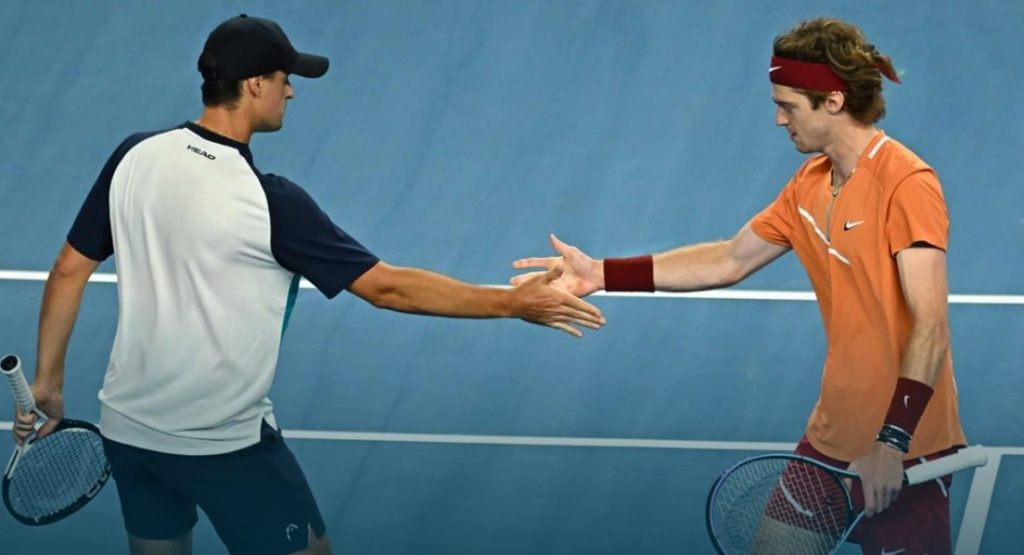
Rublev is only the third player in the tournament’s 30-year history to win both titles. Before him, there were Thomas Enqvist (1997) and Michaël Llodra (2010), who did it for all of France.
Considering the realities of today’s game and how highly specialized it’s become, it’s not often that a champion will double down at a tournament.
That makes Barbora Krejcikova’s two winner’s trophies from Roland-Garros last year the stuff of legends.
Back in Marseille, the doubles was won by the pair from Russia and Ukraine—an alliance that merits some attention in these troubled times, as the military invasion of Ukraine by Russia takes place right now. There was also a warm Russian–Ukrainian reunion on a podium at the Olympic Games that ended last weekend.

Mr. Nice Guy

According to the Oxford English Dictionary, a gentleman is a “chivalrous, courteous or honourable man.”
What better way to describe Félix Auger-Aliassime, both on and off the court? Even the 2021 US Open agrees.
We saw it early on, when he was first starting out, and he proved it again in Marseille on February 19.
In the semis, ahead 7-6, 3-2, Félix watched his opponent Roman Safiullin hit a desperate shot down the line. The Canadian checked the court for a ball mark and told the chair umpire that the line judge had called it out (something not many people had heard). But instead of trying to secure the first point of the sixth game, Félix promptly told Safiullin to challenge because it looked like the ball had clipped the line.
It had. And Safiullin, who probably hadn’t even considered asking for the replay, was up 15-0.
TennisTV commentators talked about the Canadian’s sportsmanship, and the point was later relayed on Twitter.
In no time at all, Félix was being lauded on social, alongside other great examples, including the time back in 2016 when Jack Sock did Lleyton Hewitt a favour in Perth.
I’d also cite an example I witnessed myself, as a commentator, when Julie Coin and Stéphanie Foretz competed in the semis at the 2014 Granby Challenger.
Coin fought a ruling by the line judge and the chair ump in favour of her rival, but the point stopped her momentum.
Julie Coin may have lost the match, but she won legions of admirers, forever.
Working around the clock
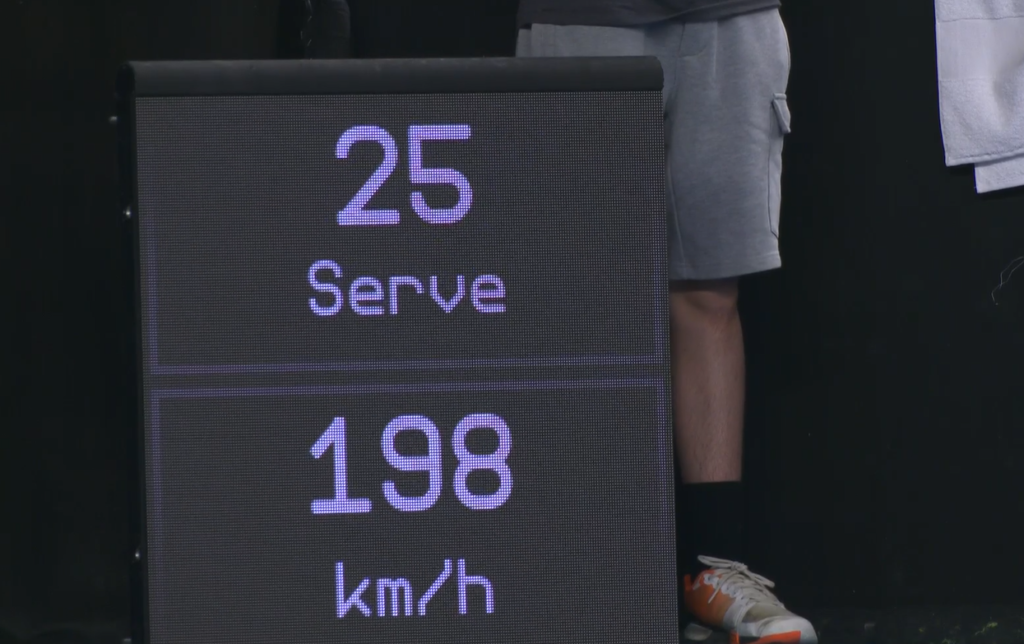
Like the Hawk-Eye Live system, the shot clock is among the many good ideas meant to help tennis move a little faster.
While Hawk-Eye does a good job, the shot clock is human operated and isn’t always as effective as it should be.
Three years after the timer was first introduced, umpires are still too lax about when they start it. The principle is clear but starting the 25-second countdown is up to the umps, who don’t always see things the same way.
The serve time is displayed in every tennis stadium, except not every umpire starts it at the same moment. It depends on the person in the chair, how intense the action is and who’s on the court.
Félix Auger-Aliassime experienced that inconsistency firsthand, in the first set of his final against Rublev in Marseille.
After his opponent levelled the field at 3–3, Félix was about to begin his pre-serve routine when he was handed a violation. He scoffed and nodded his head in disbelief at first but then thought a bit more about it and realized something was amiss.
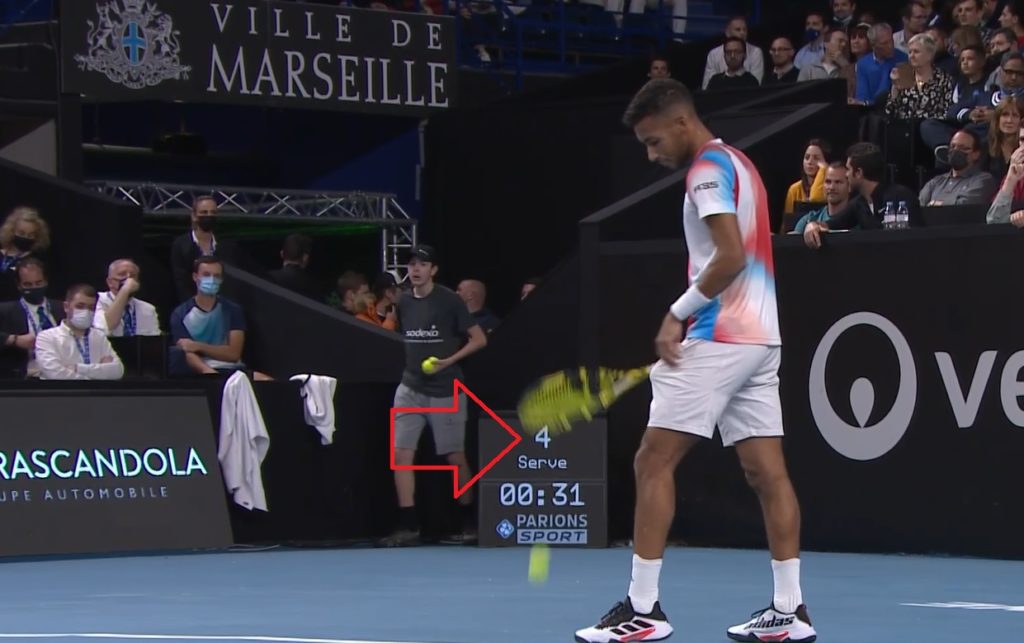
Auger-Aliassime is definitely among the slowest to put the ball in play, but he’s still got a good sense of timing when it comes to his ritual. And his 25 seconds shouldn’t have been up when he was just getting started.
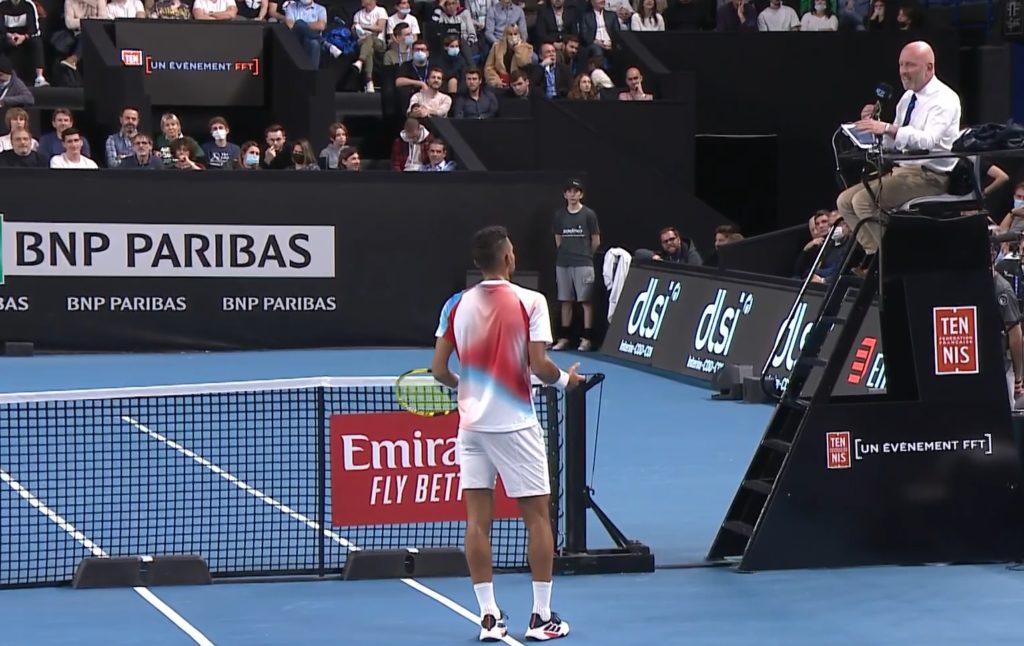
Perplexed, Auger-Aliassime asked the chair umpire if the countdown started when he had three balls in hand (an unwritten rule, apparently). Fergus Murphy replied that he pressed the button when he saw everything was in place. A somewhat suspicious Félix retreated without winning his appeal.
By the way, he was right to complain. A review of all the instances in which there were no change of ends and Félix was on serve reveals that he was only given nine seconds between the game that ended and the start of the countdown. Every other time in the first set, Fergus Murphy took between 17 and 22 seconds. And that makes a huge difference when players are very focused and very dependent on their routines.
Unfortunately, a lot of umpires tend to stick to their guns, even when faced with players—like Félix Auger-Aliassime—who don’t often argue.
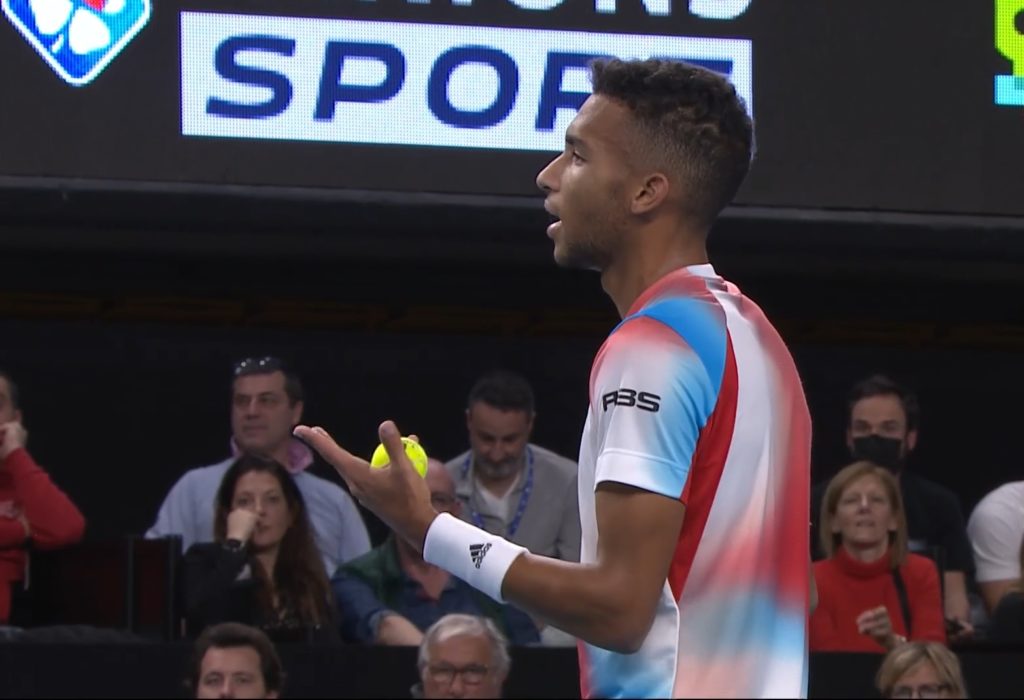
Prior to the final in Marseille, the most notable episode involving the shot clock occurred at the AO, in the quarterfinal showdown between Rafael Nadal and Denis Shapovalov.
As is often the case, 25-second rule or not, Nadal’s complex ritual went overtime. Shapovalov got upset, claiming Rafa always gets special treatment from umpires who don’t want to influence the outcome of a match or be unpopular with Spanish fans.
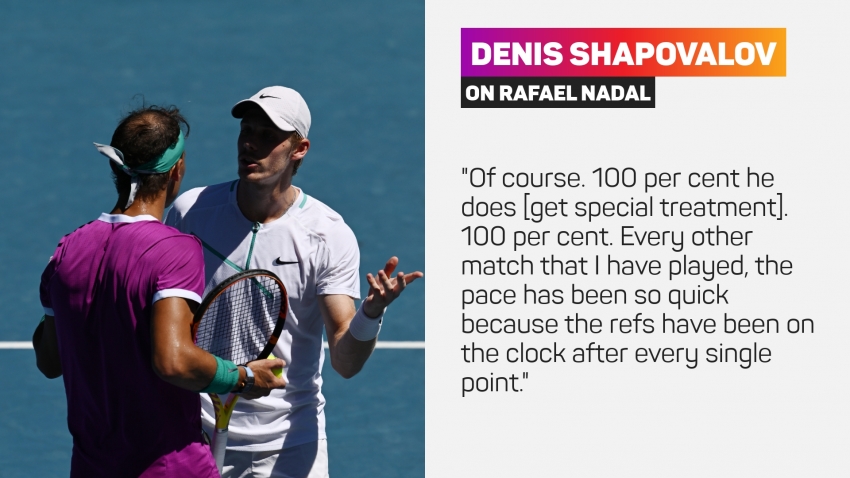
In the heat of the argument, Shapovalov lost his cool and yelled “You guys are all corrupt!” at the chair umpire. He went too far, but he’s still essentially correct. At one point, I calculated over 50 seconds between the end of a point and Nadal’s serve. And the previous point wasn’t especially intense.
And therein lies the problem. On one hand, it’s understandable that players would need some time to recover after a 25- or 30-shot marathon, but the margin can lead to negligence and even injustice in the application of a rule that must be fair to every player, at every match and in every tournament.
Shot of the week
The shot of the week is the work of Andrey Rublev—a defensive move that morphed into a winner.
In the final in Marseille, after digging deep to return a powerful serve by Félix Auger-Aliassime, Rublev blocked a big smash that came barreling toward him and then placed the ball in the right corner, much to the Canadian’s dismay.
Makes you wonder if Rublev wasn’t a goalie on a hockey team back in Moscow.
Now you understand why he does so well in doubles. Reflexes like that win matches.
Shot of the year
I know it’s only February, but it’ll be hard to top this gem by Tommy Paul.
The stroke of genius happened in the second set of his second-round match against Denis Istomin in Delray Beach. Ahead 6-2, 2-0 (30-15), Paul had to deal with an unstoppable smash.
Unstoppable?
In theory. Unless you have the presence of mind to throw your racquet behind your back.
That’s exactly what Paul did.
And that’s exactly what makes the shot so exceptional.
Email: privard@tenniscanada.com
Twitter: @paul6rivard
Follow all our Canadians in action here.


